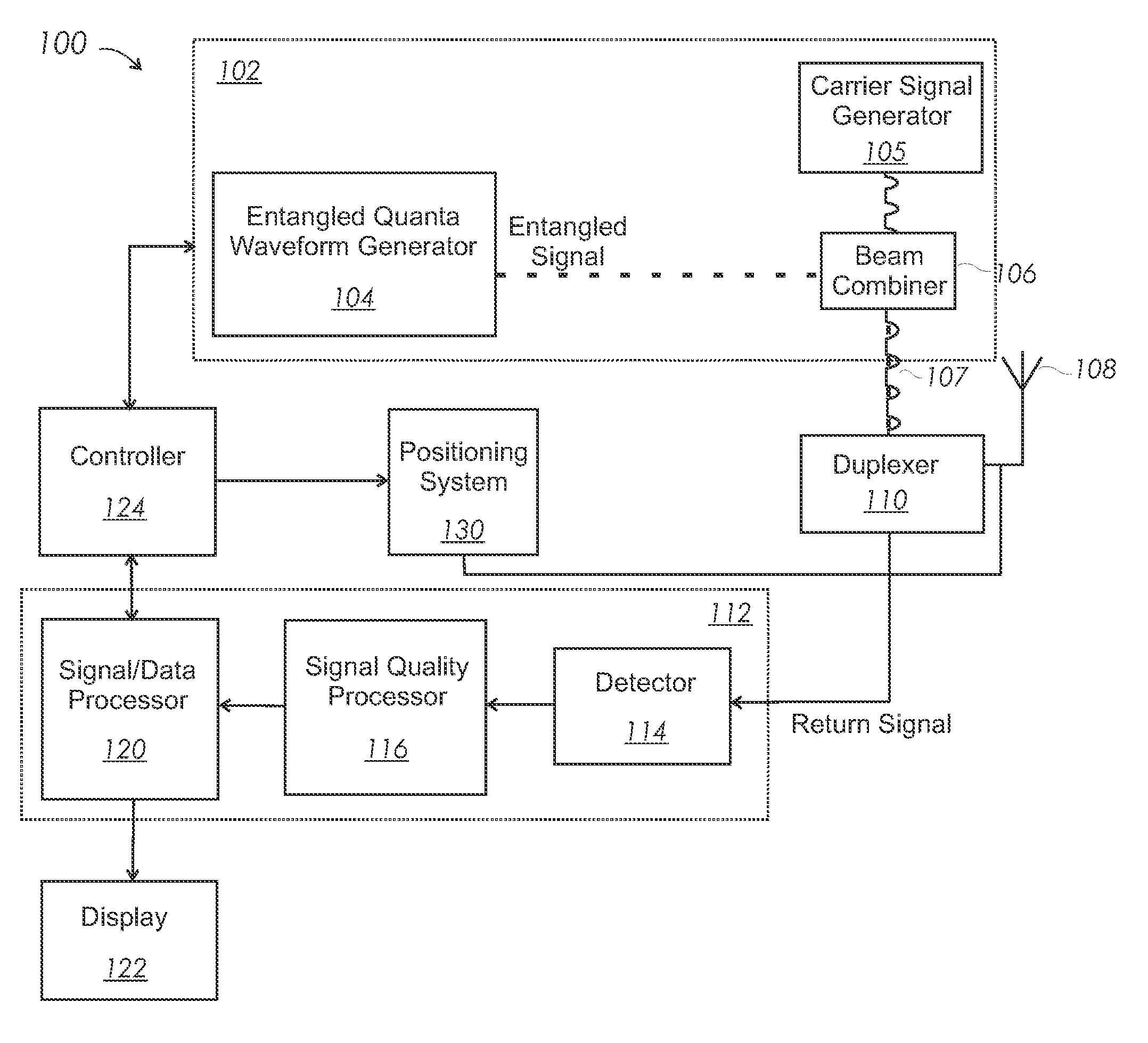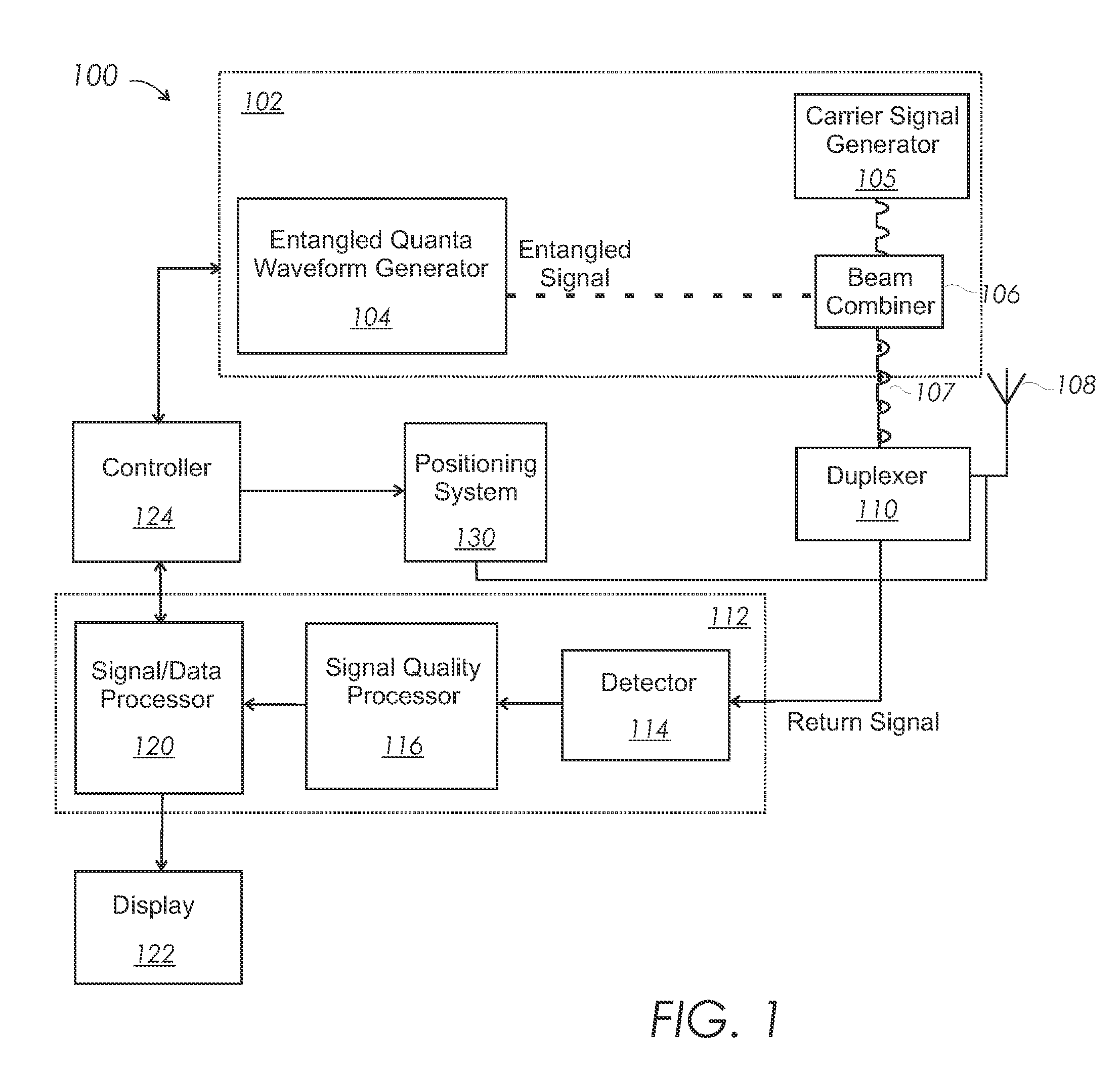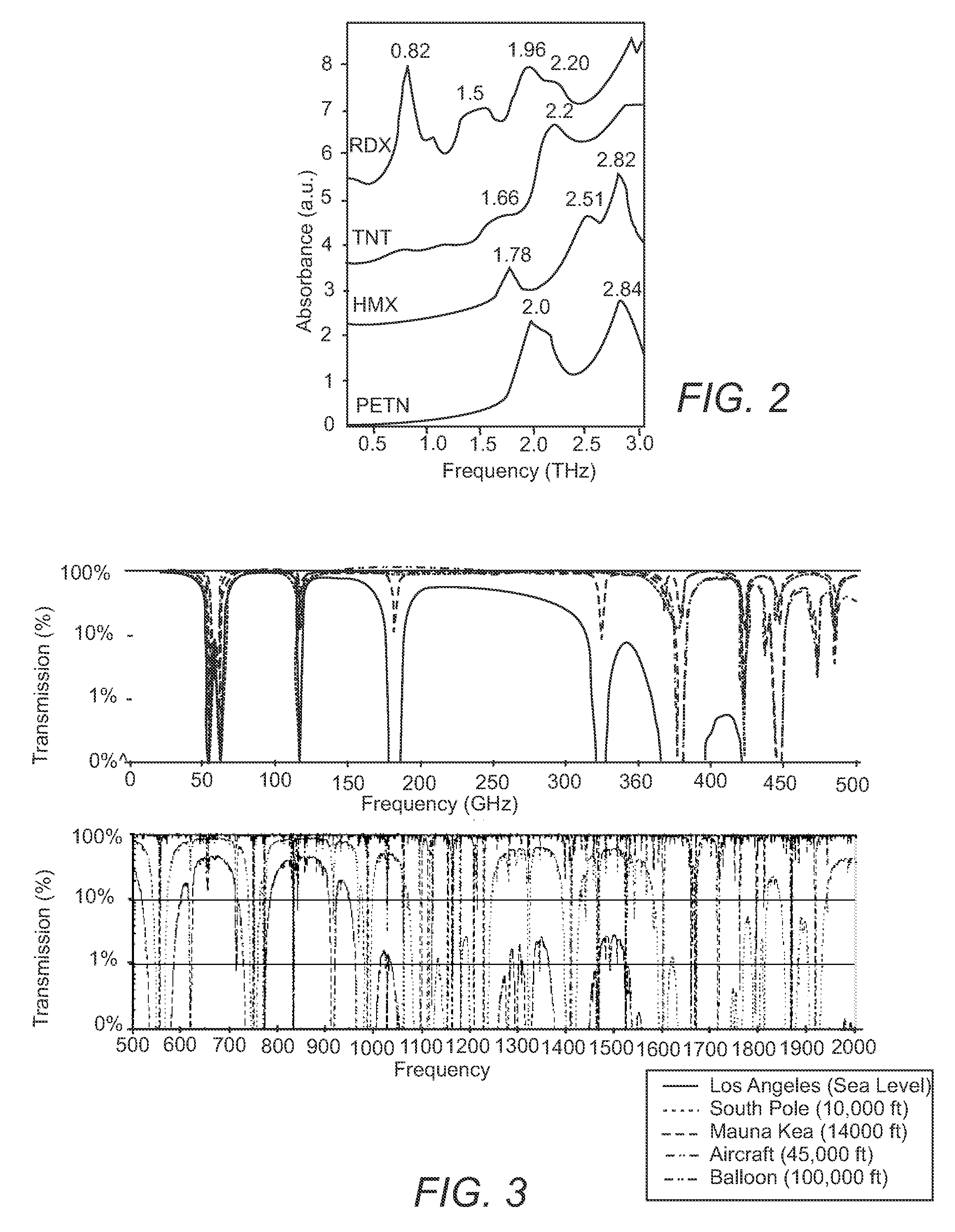Sensor Systems and Methods Using Entangled Quanta
a sensor system and quanta technology, applied in the direction of optical radiation measurement, reradiation, instruments, etc., can solve the problems of reducing the utility of such radar systems, unable to identify the exact target, and unable to achieve the resolution characteristics of active sonar
- Summary
- Abstract
- Description
- Claims
- Application Information
AI Technical Summary
Benefits of technology
Problems solved by technology
Method used
Image
Examples
Embodiment Construction
[0025]Embodiments of systems and methods for sensor systems using entangled quanta, referred to as quantum sensors, are disclosed herein. Entangled beams allow the absorption spectrum and the resolution limit of quantum sensor systems to be selected independently of one another. Thus, while classical sensor systems such as radar and sonar systems must compromise between range and resolution, quantum sensor systems can simultaneously achieve the low attenuation / high range associated with a long wave length and the high resolution associated with a short wave length.
[0026]As used herein, the term “quantum sensor system” refers to systems that use entangled beams at radio and / or audio frequencies. The terms “quantum” and “quanta” refer to photon(s) for radio frequency waves and / or phonon(s) for audio frequency waves. The wavelength of two or more entangled quanta, referred to as a multiquanta, is proportional to the number of entangled quanta associated with the multiquanta. For exampl...
PUM
 Login to View More
Login to View More Abstract
Description
Claims
Application Information
 Login to View More
Login to View More - R&D
- Intellectual Property
- Life Sciences
- Materials
- Tech Scout
- Unparalleled Data Quality
- Higher Quality Content
- 60% Fewer Hallucinations
Browse by: Latest US Patents, China's latest patents, Technical Efficacy Thesaurus, Application Domain, Technology Topic, Popular Technical Reports.
© 2025 PatSnap. All rights reserved.Legal|Privacy policy|Modern Slavery Act Transparency Statement|Sitemap|About US| Contact US: help@patsnap.com



